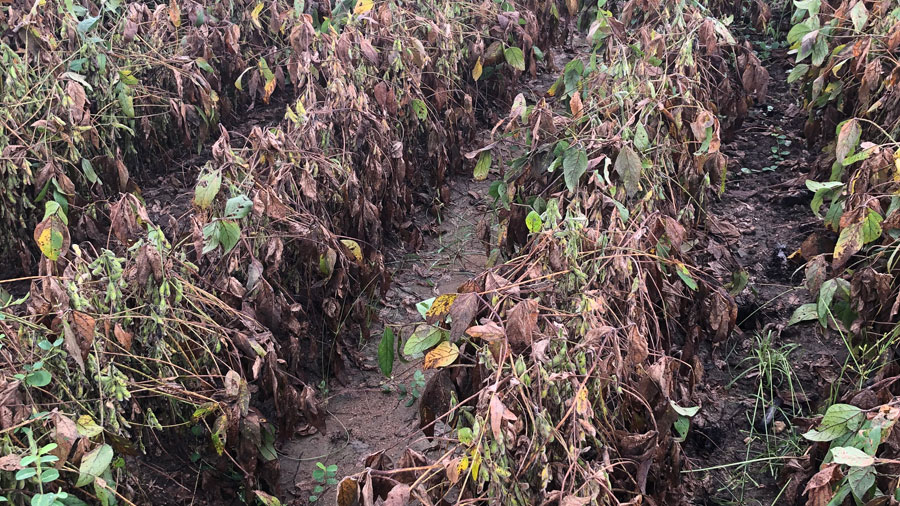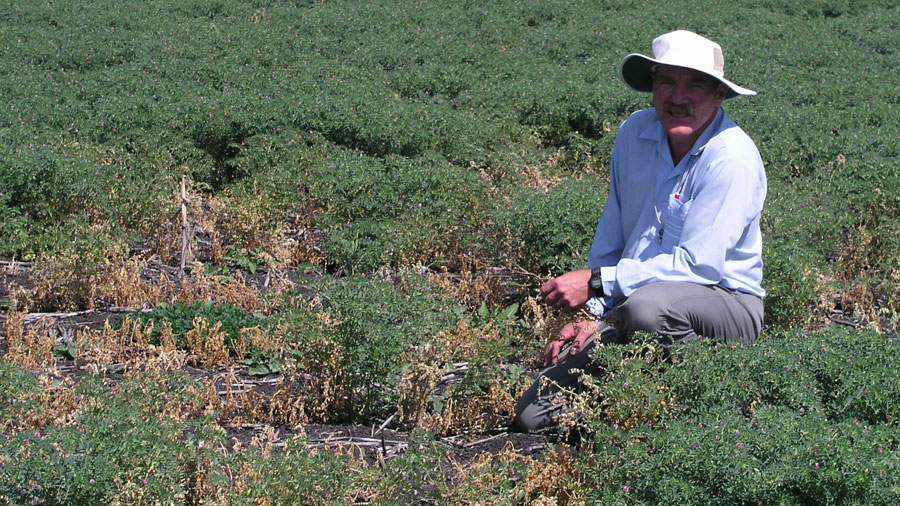Disease build-up in 2020, due to wetter conditions across many areas, highlights risks for 2021.
Crop surveys enable the early detection of diseases in commercial crops and ensure that timely messages are provided to help growers and advisers protect crops.
The surveys allow pathologists to identify any new or emerging threats and keep track of the level of control being achieved in the field, which may be associated with changes in disease pathotypes.
The information collected during disease surveillance is also critical for both investment and research priorities, and samples collected may directly contribute to GRDC research programs.
GRDC’s national surveillance program for pulses was undertaken in 2019 and 2020 by the:
- Western Australian Department of Primary Industries and Regional Development (DPIRD)
- NSW Department of Primary Industries (DPI)
- South Australian Research and Development Institute (SARDI)
- Agriculture Victoria
- Queensland Department of Agriculture and Fisheries.
Canola survey results are included for WA and NSW with additional comment provided by Marcroft Grains Pathology.
No exotic diseases were detected, supporting Australia’s export market access and ‘area freedom’ status for diseases not present in Australia.
Western Australia
In WA, 29 lupin, five chickpea, nine lentil and two faba bean paddocks were sampled across 2019 and 2020. The timing of rain in 2020 favoured Sclerotinia in lupins and canola.
Lupin diseases found in 2020 were Sclerotinia stem rot, Phomopsis and a low level of anthracnose. Anthracnose and brown spot incidence were higher in 2019 than 2020.
Disease in other pulses was minimal due to fungicide application but included Ascochyta blight in chickpeas in 2020 and Botrytis grey mould in lentils in 2019.
There were 68 canola paddocks surveyed across 2019 and 2020. Sclerotinia stem rot was the most common disease and incidence was five times greater in 2020. There was more upper canopy blackleg infection in 2020. Powdery mildew was only found in 2020.

Warm temperatures and large amounts of rainfall in early 2020 in northern Queensland led to major outbreaks of anthracnose and target spot in soybeans in association with soybean stem fly. Photo: Lisa Kelly
NSW and Queensland
In southern and central NSW, 32 narrow-leaf and 13 albus lupin, 14 chickpea, seven lentil, 15 field pea, 14 faba bean and 30 canola crops were sampled across 2019 and 2020. In 2019, the development of Sclerotinia in pulses was higher than expected under dry conditions. In pulses, Ascochyta blight (in field peas and chickpeas) and virus diseases were found frequently.
The wetter conditions in 2020 favoured Sclerotinia infection, with the disease found in 62 per cent of all pulses. Virus and Botrytis diseases were also frequently detected. Blackleg leaf lesions and/or stem canker were found in every canola crop surveyed.
Given the level of disease build-up in 2020, paddocks in medium to high-rainfall areas will be at greater risk of disease in 2021, especially those identified with Sclerotinia.
In northern NSW and southern Queensland, 210 chickpea and lentil paddocks and 50 faba bean paddocks were sampled across 2019 and 2020. Viruses were the most common diseases found in both years, although less so in the drier conditions in Queensland in 2020.
While there were few crops showing symptoms of fungal diseases, PREDICTA® B testing in 2019 detected Botrytis, Ascochyta and charcoal rot in chickpeas and in faba beans. Despite being known to be widespread in the region, Aphanomyces root rot and black root rot were not detected in the dry conditions in 2019.
In Queensland, 18 peanut, 36 mungbean and 10 soybean crops were surveyed in 2020. The most common diseases in mungbeans were tobacco streak virus, Fusarium wilt and powdery mildew. In peanuts, Fusarium root rot was common and, to a lesser extent, phytoplasma. In soybeans, the warm temperatures and high rainfall in northern Queensland in early 2020 led to major outbreaks of anthracnose and target spot.
South Australia
In SA, 11 chickpea, 10 lentil, 10 field pea and nine faba bean crops were inspected in 2020. At least one foliar disease was observed in 73 per cent of the samples. However, disease levels were generally low; likely due to fungicide applications and the dry June-July.
All field pea plants showed blackspot at varying levels. Levels of Ascochyta blight in chickpeas, faba beans and lentils were low, with some crops free of disease. Downy mildew was detected at low levels, but chocolate spot was moderately high in some south-eastern crops.

NSW DPI’s Dr Kevin Moore inspecting Ascochyta infection in chickpeas in northern New South Wales. Photo: Kevin Moore
Victoria
In Victoria, 35 chickpea, 70 lentil, two field pea, 23 faba bean, six lupin and four vetch paddocks were sampled across 2019 and 2020, with disease severity generally low. Ascochyta blight was common in chickpeas and faba beans and, to a lesser extent, lentils. Cercospora leaf spot and chocolate spot were found in all faba bean paddocks. Disease levels in lupins, vetch and field peas were low.
Virus testing found turnip yellows virus in chickpeas, lentils and faba beans; cucumber mosaic virus in lentils; and bean leafroll virus in lentils and faba beans were the most prevalent viruses.
PREDICTA® B testing found root lesion nematode, Pratylenchus neglectus, in the majority of paddocks, and the pathogens that cause Pythium root rot, charcoal rot and Rhizoctonia were also detected frequently.
More information: Ciara Beard, 08 9956 8504, ciara.beard@dpird.wa.gov.au; Joop Van Leur, 0427 928 018, joop.vanleur@dpi.nsw.gov.au; Dr Kurt Lindbeck, 02 6938 1608, kurt.lindbeck@dpi.nsw.gov.au; Sara Blake, 08 8429 2248, sara.blake@sa.gov.au; Dr Joshua Fanning, 03 4344 3111, joshua.fanning@agriculture.vic.gov.au; Lisa Kelly, 07 4529 4291, lisa.kelly@daf.qld.gov.au

























































